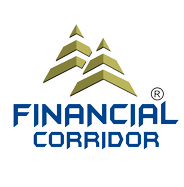CMT LEVEL 2 COURSE

Syllabus of CMT Level 2
I. Theory and History
i. Evolution of Technical Analysis
ii.Key Concepts in Technical Analysis and Market Analysis
iii. Behavioral Finance
II. Classical Techniques
i. Chart Types and Construction
ii.Trend Analysis
iii. Chart Pattern Analysis
iv. Internal and External Technical Indicators
v.Cycles
III. Advanced Technique
i. Statistical Analysis
ii.Volatility Analysis
iii. Systematic Trading
iv. Cross-asset Analysis
v.Principles of Risk Management
IV. Application of Technical Analysis
i. Analyze and interpret charts for entries and exits using classical charts, patterns, and indicators.
ii.Develop plans to address risk using, e.g., technical, behavioral, quantitative analysis, leverage.
iii. Analyze the output from models to determine their suitability for implementation.
iv. Establish weighting of assets and securities using, e.g., relative strength, trend, momentum.
v.Integrate volatility measures into price forecasting and trade management.
V. Ethics
Section One: Theory and History of Technical Analysis
1. Alpha and Beta – Outperforming the Benchmarks
2. Fusion Analysis: Technical Analysis as Part of a Team Approach
Section Two: Behavioural Finance
1. 1 Anatomy of Market Bubbles
Section Three: Charts: Organizing Market Data
1. Charting Multiple Data Sets and Multiple Data Intervals
2. Market Profile
Section Four: Chart Pattern Analysis
1. Classical Chart Patterns
2. Candlestick Patterns in the Real World
3. Candlestick Analysis in the Real World
4. Point-and-Figure Pattern Analysis
Section Five: Trend Analysis
1. Price Trend and Volume
2. Market Internals
Section Six: Volatility Analysis
1. Extrapolating Price from Volatility
2. Volatility Risk Premium
3. Volatility Indexes and VIX Complex
Section Seven: Sentiment
1. Analysing Sentiment in the Stock Market
2. Analyzing Sentiment in the Derivatives Market
Section Eight: Statistics for Technicians
1. Inferential Statistics
Section Nine: Technical Indicators
1. Momentum and Indicator Interpretation Part 1
2. Momentum and Indicator Interpretation Part 2
3. Volume Weighted Average Price
4. Practical Applications of Bollinger Bands
Section Ten: Comparative Market Analysis
1. Advanced Applications of Relative Strength
Section Eleven : Cycle Analysis
1. Concepts in Cycle Theory
2. Applied Cycle Analysis
3. Analysis of Seasonal Cycles
4. The Elliott Wave Principle Part 1
5. The Elliott Wave Principle Part 2
6. The Elliott Wave Principle Part 3
Section Twelve: Systems and Quantitative Methods
1. Trading Systems
2. Applying Quantitative Techniques
FEE Structure:
Course – CMT Level 2
Duration – 4 Months
Course Fees – Rs – 40,000/- Only
